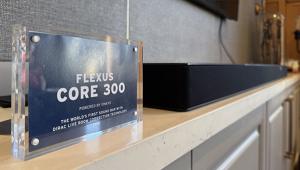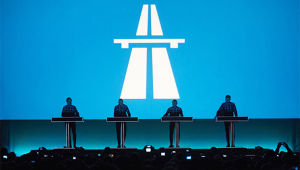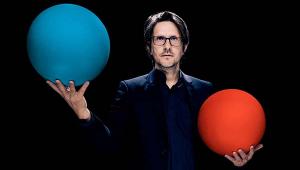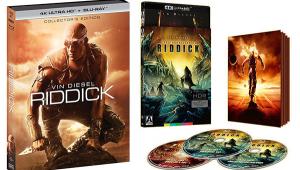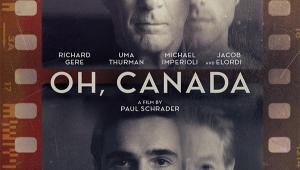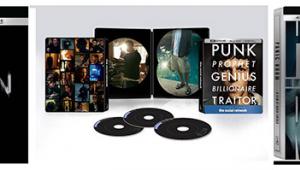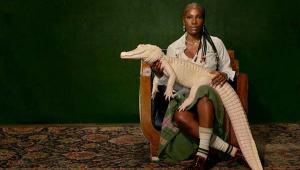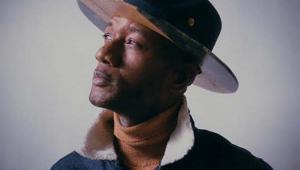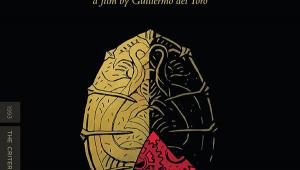1953's The Hitch-Hiker on DVD
Edmond O'Brien, Frank Lovejoy, William Talman. Directed by Ida Lupino. Aspect ratio: 1.33:1 (full-frame). Dolby Digital mono. 70 minutes. 1953. The Roan Group AED-2028 ($19.95), Kino Video K144 ($29.95). NR.
In the 1930s and '40s, Ida Lupino was one of Hollywood's most original talents—as an actress, her versatility and spirit can be compared to those of Barbara Stanwyck—and in the '50s she emerged as a writer-director who could bring together style and substance on a low budget. The title "Queen of the B's," which she earned during that period (when Stanwyck also made crime melodramas), is high praise.
The Hitch-Hiker, which Lupino co-wrote with her then-husband Collier Young, is a good example of what made her a cult favorite. The original story by Daniel Mainwaring remains uncredited because he was blacklisted, but it anticipates his later, more paranoid script for Invasion of the Body Snatchers in the way it denies people even the most basic security and leaves them at the mercy of random forces.
In this case, the Mexican fishing-vacation plans of Roy Collins (Edmond O'Brien) and Gil Bowen (Frank Lovejoy) are rudely interrupted by a murderous hitchhiker named Emmett Myers (William Talman), who not only uses them and their vehicle for escaping the police, but adds plenty of psychological torture to amuse his own twisted mind. This serial killer victimizes the two men in several ways: he humiliates them by ordering them around constantly; he forces one of them to do target practice, deliberately risking his friend's life; and plays a sadistic game of cat-and-mouse to test their limits. This is, after all, a man who sleeps with one eye open (his eyelid is partly paralyzed). It's hard to tell what this twisted pretzel is up to—but at the same time, his real power is his gun, which he brandishes compulsively at all times.
Myers keeps berating the two for their stupidity, for their loyalty to each other (which prevents them from escaping individually), for caring about and feeling responsible for others—a burden that, in his mind, makes them losers. When a Mexican girl clings to Myers in a small bodega on the way, he dismisses her abruptly, prompting Bowen to give her a consoling hug. Bowen, unable to take the sight, barks, "Drop the kid!"
Lupino's style is effective and lean. She creates suspense and studies the hostages' minds at the same time, because the only guarantee they (and we) have is that they will be killed in the end, as the killer's habitual pattern suggests. While the bleak, barren landscapes of rocky mountains and dirt roads reflect the limbo of their own state of mind, they are also used to advance the plot: high points allow Myers to observe advancing cars, and side roads offer good hiding places.
From the outset, Lupino introduces the subject with quick shots and subsequent dissolves, to show a hitchhiker taken by two different cars. After each pickup there's a shot, then a body slumping. Then comes a barrage of newspaper headlines telling us about the culprit. All this takes a minute or two; then comes the incident that starts this story.
Lupino similarly uses scenery and story to create lyricism: the long shadows of the three men falling on the parched land; the car's headlights piercing the dark night like a cat's eyes; and medium shots of the hostages' faces juxtaposed with their kidnapper's, suggesting again and again their impotent rage and his perverse glee.
Although all three performances are topnotch, I have a soft spot for Edmond O'Brien, who may well be the archetypal noir character—average-looking, sensitive enough to suffer the pain of whatever is inflicted on him, yet motivated to survive. In The Hitch-Hiker, he survives with a bang—he actually gets to punch the captured killer as the latter writhes in disbelief at the sight of himself in handcuffs—but there's also a quiet acceptance about him that can make him look almost stoic.
The Roan Group's transfer from a 35mm print is mostly excellent. With the exception of some speckling and uneven lighting (the right side of the screen is at times brighter than the left), it has razor-sharp images and the extra advantage of an actual full-frame presentation, which involves an extra dark border around the image (the TV screen doesn't correspond exactly to the 1.33:1 aspect ratio), giving us the entire frame. The newspaper headlines in the beginning are shown complete, but not in the Kino Video version, where they appear cropped at the edges. Though this is the only instance in the Kino version where the viewer actually loses a bit of content, the Kino print is sometimes scratchy, and some frames are grainy. But, overall, both are high-quality transfers of a worthwhile classic.
- Log in or register to post comments




























